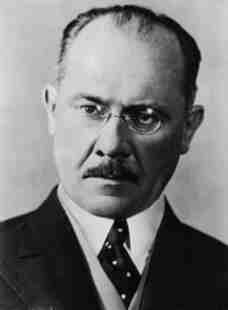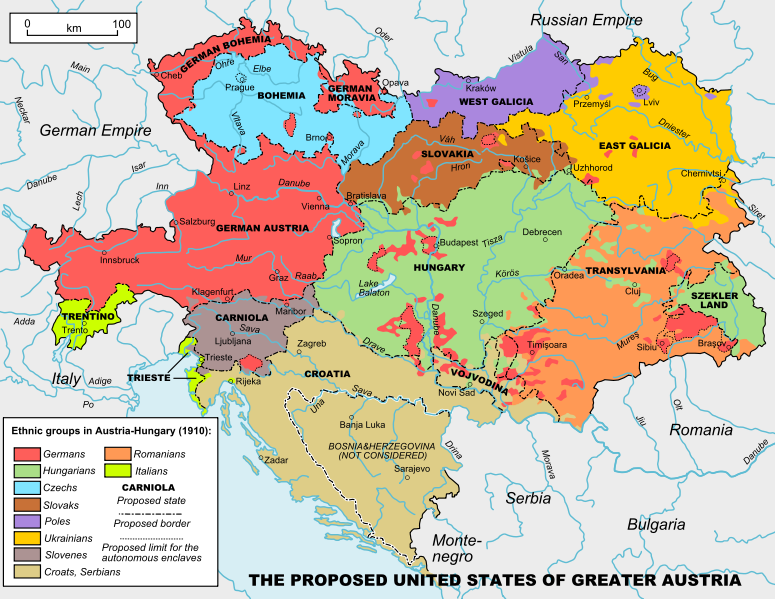<Back to Index>
- Jurist Edward Coke, 1552
- Humanist Scholar and Poet Conrad Celtes, 1459
- Prime Minister of Czechoslovakia Milan Hodža, 1878
PAGE SPONSOR


Milan Hodža (1 February 1878, Sučany, Austria - Hungary (present day Slovakia) – 27 June 1944, Clearwater, Florida, United States) was a prominent Slovak politician and journalist, serving from 1935 to 1938 as the Prime Minister of Czechoslovakia and in December 1935 as the acting President of Czechoslovakia. As a proponent of regional integration, he was famous for his attempts to establish a democratic federation of Central European states.
His son was Fedor Hodža (a politician) and he was the nephew of Michal Miloslav Hodža (a politician and poet).
He held the following offices: Milan Hodža studied at universities in Budapest and Vienna. He started his career of a journalist in Budapest, in 1897. He edited and founded the newspaper Slovenský denník (1900 - 1901) and the weekly Slovenský týždenník (1903 - 1914). From 1916 to 1918, he was editor of the Austrian press office in Vienna. As a member of the Slovak National Party - at that time the only Slovak party in Austria - Hungary- he became the ideological leader and founder of Slovak agrarianism. Since the Slovak National Party did not endorse his agrarian program, he decided to create his own political party, but World War I prevented
him from this. Later, he also became an important representative of the
Czechoslovak and international agrarian movement between the two world
wars: He founded and was a member of the presidium of the International Agrarian Bureau - an institution of European agrarian parties. Milan Hodža was a close aide of Archduke Franz Ferdinand,
the successor to the Austrian and Hungarian thrones, since the 1910
elections. He proposed to him a very precise plan of turning the Kingdom of Hungary into a federative monarchy (including a separate Slovak state). The Archduke hoped that federalization would strengthen the ties between the oppressed non-Magyar nations and the monarchy, but his initiative was strongly opposed by the Hungarian political elite. During World War I, Milan Hodža was involved in the preparations of the creation of Czecho - Slovakia. He was a member of the 1918 - 1919 Slovak National Council and was a signatory of the Declaration of the Slovak Nation, by which the Slovaks officially joined the newly created state of Czechoslovakia in 1918. After World War I, he became the leader of the Czechoslovak Agrarian Party in
Slovakia and as such gained considerable influence over
Czechoslovakia's policy in all spheres – he influenced the process of
land reform, the passing of bills on agrarian tolls, enforced
syndicalization, administrative reforms, and the structure and policy
of the government. In 1936 - 1937 he attempted to launch a project of
bringing together Czechoslovakia, Austria, Romania, Hungary and
Yugoslavia based on preferential duties - a step towards the
unprecedented economic integration of the region. Instead, Hodža's
government had to accept the Munich Agreement in 1938 and he was forced to resign under pressure. Since 1921, Milan Hodža was also professor of modern history at the Comenius University in Bratislava.
In the interwar period, he helped found many Slovak newspapers and
magazines and had a strong political and ideological influence on them.
His political papers were published in the book Články, reči, štúdie 1-6 (1930 - 1934; Articles, Speeches, Studies). In
the 1920s, he was a Czechoslovakist (considered the Czechs and Slovaks
to form one nation), which enabled him to reach high posts in Prague.
Nevertheless he had frequent conflicts with Czech politicians, because
he was trying to take into account the specific needs of Slovakia
within Czechoslovakia, which was unusual at that time. Moreover, he
planned the creation of a block of anti - Centrist (i.e. anti - Prague)
Slovak parties. He somewhat changed his views later - in 1938 he
acknowledged the full sovereignty of the Slovaks as a separate nation
and in the summer of that year (i.e. before Slovakia's autonomy was
proclaimed in the autumn) he included in the programme of his
government his personal project of changes in the structure of
centralist Czechoslovakia - it was a combination of federal, autonomist
and self - administrative ideas. After the Munich Agreement in late 1938, he lived in exile in Switzerland, France (1939), Great Britain (1940) and since 1941 in the US. During World War II,
he was the co-author of a memorandum on the situation of Slovakia
within Czechoslovakia (October 1939), in which he reiterated his
project of 1938. In November 1939, he established the 1939 Slovak National Council in
Paris as the supreme body of Slovak resistance. The Slovak National
Council merged with the Czech National Council to form the Czecho - Slovak National Council in January 1940. This organization (including its Czech members) competed with the government - in - exile led by Edvard Beneš (a
strong Czechoslovakist) in London. Both exile groups were in permanent
conflict. When Paris was conquered by the Germans, the British security
forces took the members of the Czecho - Slovak National Council into
custody which was an accomplishment of spies working for the Beneš
group. Hodža capitulated and he accepted a second rate post in Beneš's
State Council in November 1940. He did not participate in the
activities of the State Council however, and fled to the US in 1941. In
the US, he developed a project for a Central European Federation
(published as the book Federation in Central Europe, 1942). Although his plan received attention from American intellectuals and the Department of State officials, his plan could not materialize due to the beginning of the Cold War. Milan
Hodža received prestigious Czechoslovak, French, Romanian, Yugoslavian and Polish
awards. On 27 June 2002 the remains of Milan Hodža were reburied in the National Cemetery in Martin, in his native Slovakia.